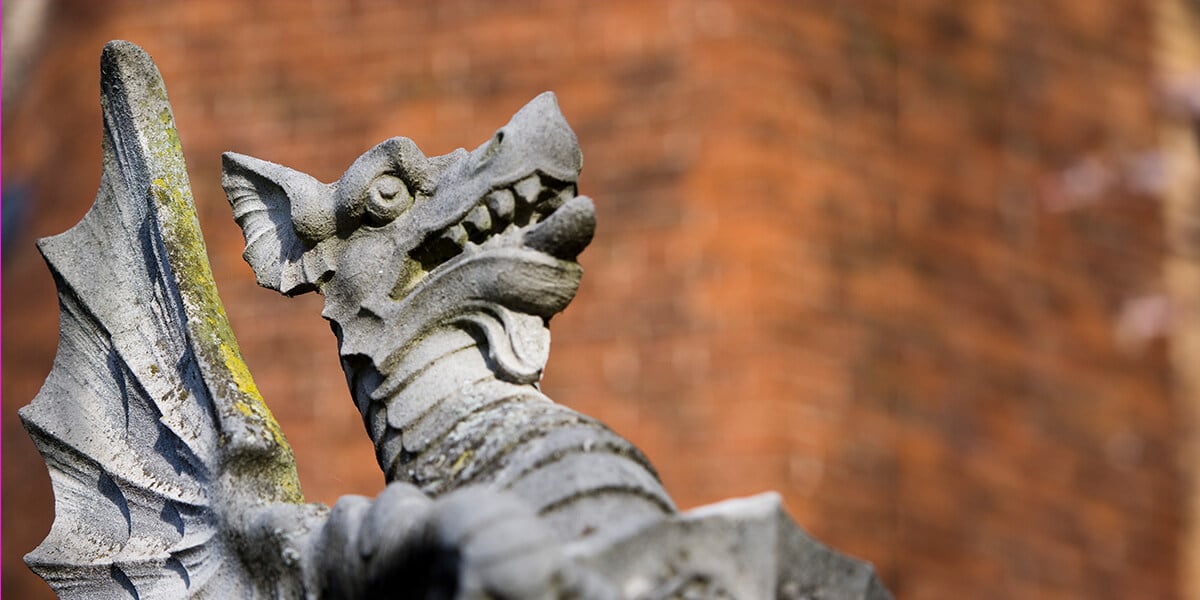
Heraldry and Heritage
With its impressive scale and abundance of art and splendour, Hampton Court Palace undeniably displays formidable royal power and wealth. After seizing Hampton Court Palace from Cardinal Thomas Wolsey, Henry VIII transformed it into the seat of government and court life and began renovations. This eventually included an imposing entrance where ancient heraldic beasts were brought to life in stone.
Since medieval times in England, royal and aristocratic families adopted mythical creatures and animals as personal emblems to show their lineage and the family’s descent, pedigree and allegiances.
Henry VIII, the son of Henry VII, who had won the crown at the Battle of Bosworth Field, was determined to solidify his power and reputation among his court and neighbouring leaders. He devoted significant effort to legitimising his right to rule by highlighting ancestral connections within the design of the palace. Confidently signalling royal bloodlines, these Royal Beasts were one of the many ways Henry VIII ensured the future success of the Tudor dynasty, and are often considered some of the most intricate and beautiful motifs used by Henry VIII to decorate the palace and gardens.
Whilst the original plan for the bridge’s ornamentation may have differed, after his marriage to Jane Seymour in May 1536, Henry VIII decided to transform the bridge into a commemoration of their union, commissioning an array of King and Queen’s Beasts, complete with heraldic shields, to embellish the bridge.
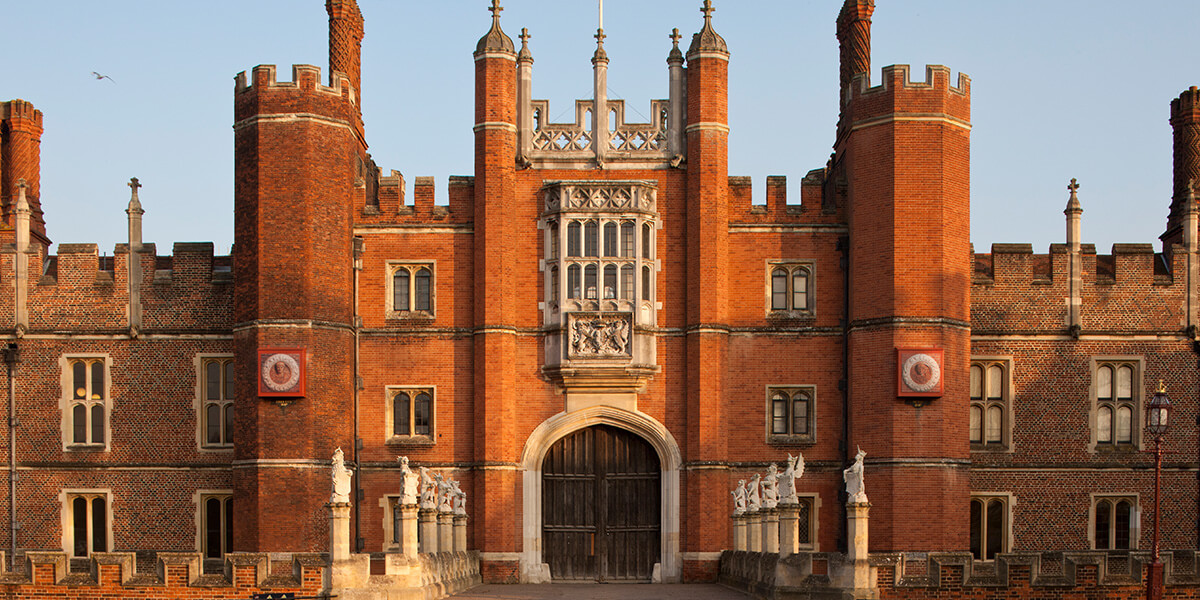
A Dragon’s Reign
In their astute employment of beasts, the Tudor dynasty aimed to convey symbolic representations of their virtues and strengths by invoking animals previously associated with earlier royal lineages. The Tudor Dragon stands on the left side of the Moat Bridge, serving as a symbol of valour and bravery, assuming the role of a vigilant guardian poised to safeguard the gate.
Owen Tudor, Henry VIII’s great-grandfather, adopted the dragon to highlight his Welsh ancestry, tracing back to the King of Gwynedd in the seventh century. After winning the Battle of Bosworth Field, Henry VII used a red dragon on a white and green background as his emblem when he entered St Paul’s Cathedral.
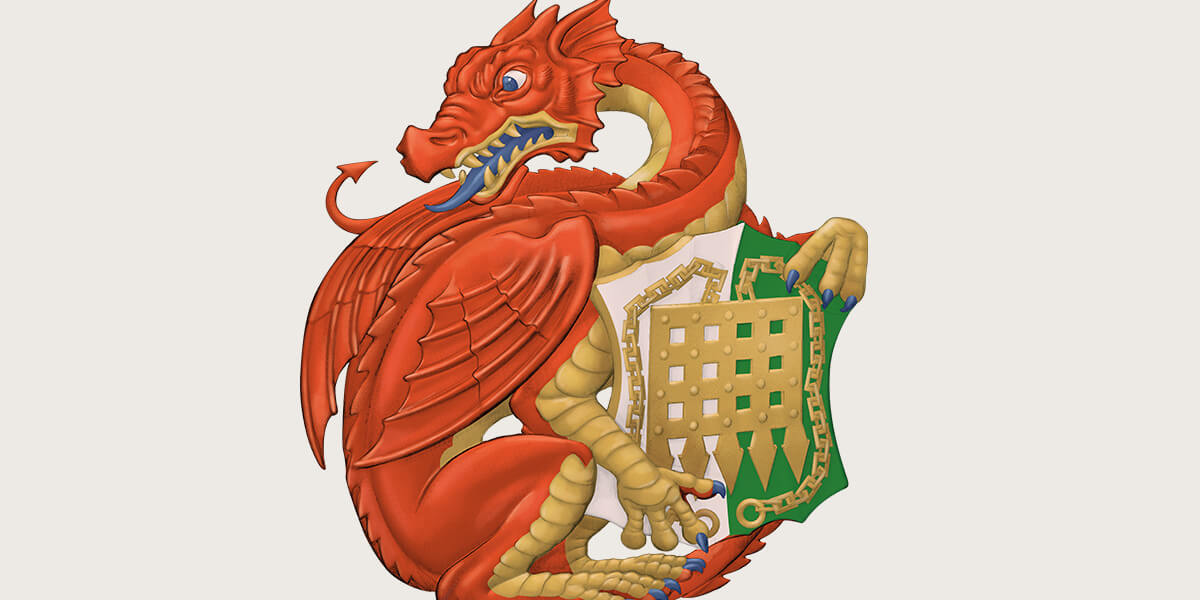
The Beast of Hampton Court
Much like the Seymour Unicorn – one of Jane Seymour’s beasts – the dragon was a mythical creature, likely to have been inspired by exotic animals, such as snakes, lizards and bats. Although lacking pigmentation in its restored form, historical documents detail that the Hampton Court Palace rendition of the dragon, not unlike the dragon of Wales, would have once possessed a crimson head, back and bat-like wings juxtaposed against a golden underbelly.
The Tudor Dragon firmly grasps another political and historical power emblem, a shield embellished with the Beaufort badge. This particular badge prominently features the Beaufort Portcullis with interwoven chains, a symbol that traces the lineage of the Tudor family to Margaret Beaufort, the mother of Henry VII. Known as the matriarch of the Tudors, Margaret Beaufort wielded significant power as an influential member of the royal household and played a pivotal role in the political proceedings of her era.
DISCOVER THE ROYAL TUDOR BEASTS
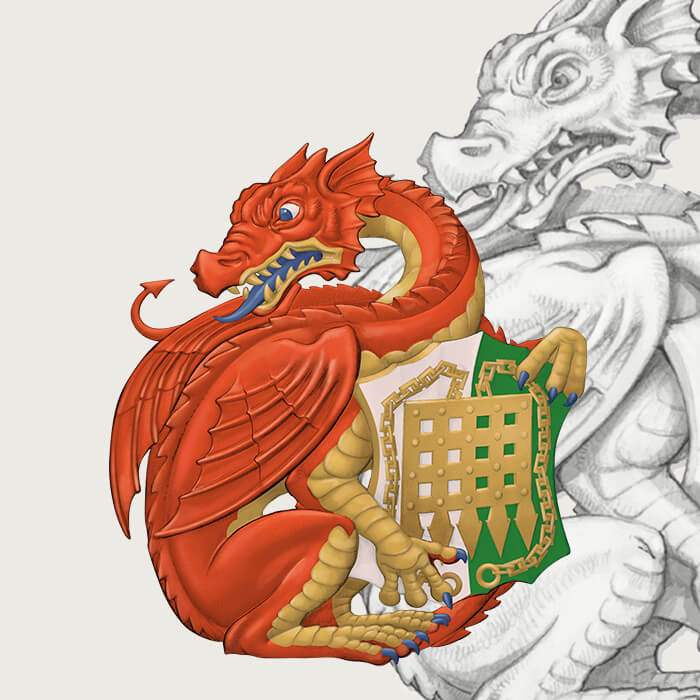
THE TUDOR DRAGON: BEHIND THE DESIGN
Explore the Tudor Dragon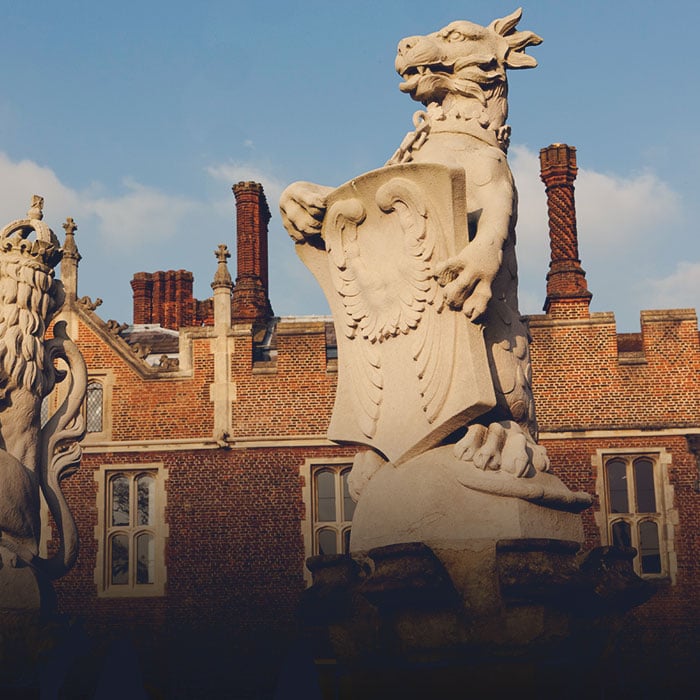
THE ROYAL TUDOR BEASTS COLLECTION
Explore the Beasts
© Historic Royal Palaces 2024 Produced under licence from Historic Royal Palaces Enterprises Limited
